Yesterday and the day before I spoke about ten new fruits for building a sustainable economy in the Okanagan-Okanogan (click), and ten more (click). Today, I’ve gathered some vegetables with potential for a creative future. Many of these are Syilx crops, with the potential for marketing to Indigenous people across the West of the continent and for uniting cultures across the big divide of history. Others are variations on European crops. The big story with fruits is the potential to move fruit out of the hot valley bottom and to use natural rather than engineered water. The big story with vegetables is to cross European and Indigenous cultures and to move crops out of a dry season made fruitful by engineered water to the wet seasons, with their bountiful water. This discussion of vegetables will come in three parts. The first two will be new crops with commercial potential. The third will be traditional garden crops grown in non-traditional seasons.
1. Mariposa Lily
A Syilx Crop
In the American West, mariposa lilies are most often white. Up here, though, they are a beautiful shade of mauve. As you can see in the image below, they are no longer plentiful. It has been 100 years, after all, without burning and with pressure from heavy grazing by cattle.
 Mariposa Lilies in the Wild, Bella Vista
Mariposa Lilies in the Wild, Bella Vista
This is a hillside of dust that appears almost as dry as the moon. The richness of growth upon it demonstrates that this is not actually true. Think of these plants as being a controlled evaporation of water. Rather than the elemental evaporation (from water to vapour to cloud to rain to water to sewage plant to water and back to you) favoured by Western science, it is evaporated through long chains of life. Western agriculture tries to grow crops within the elemental environment, because that is what its tools can perceive. With a new toolkit, it can begin to grow crops within the long carbon strings of a living environment.
Nonetheless, mariposa lilies are already grown and sold as floral bulbs, including in the Methow, in one of the sister Plateau valleys to the Okanogan. Creating the numbers for edible production is easily within grasp. Not only can the bulbs be roasted and eaten, but the new shoots can be harvested before they open. Please do not attempt this with wild mariposa lilies, as the numbers are too low to support harvest of any kind.

Mariposa Lily Stalk
Mariposa lilies can be grown commercially on high-exposure slopes, without irrigation. They can support a rich bee population and a honey and pollen industry. They can be cropped among other, lower-growing crops, as they easily stand above them. As with many Indigenous crops, they could support an Indigenous vegetable industry, marketed to Indigenous restaurants, feasts and gatherings, as well as an expanded floral bulb industry. The high cost of labour is easily offset by their high value as cultural products, the low production costs created by the use of otherwise unused land, and the lack of need for expensive subsidies of industrialized water and its high capital costs. Because of their aesthetic value, mariposa lilies also support alternate production models, including ones in which production is given to people themselves rather than to professional farmers, or ones in which decorative private or civic plantings are harvested post-bloom, or harvested for seed, which can be sold for a fair price of, say, 5 or 10 cents a seed. I promise you: there is a subculture of gleaners in all cities and towns. It is a culture of generous, gentle and respectful people who collect bottles from roadsides, garbage cans and green recycling boxes. There is one man in Vernon who collects canning jars from a glass recycling depot and trades them to elderly ladies (and Harold) for jam. If there were a market for mariposa lily seeds at the same rate as bottles, the seeds would be collected, right on time, every time. Currently, this culture of people (the poor, the unemployed, the elderly poor, people with alternate mental processing, the homeless, ex-cons, children and others) is marginalized and forced into transience and ghost status by a society in which transactions built on capital and wage models are increasingly dominant. It would be exciting to welcome them as the valuable cultural leaders that they are and bring them back to the community table. Besides, these lilies are a zillion times more beautiful than tulips.
2. Arrow-leaved Balsam Root
A Syilx Crop
These gorgeous, mis-named sunflowers are not only beautiful but intensely productive. They can be harvested for their new shoots, for their seed, for honey and pollen, and for their taproots, which can be as long and thick as a man’s arm. They can be used as foodstuffs or medicinals, especially as a natural mentholated cough and sore throat treatment. They thrive in even more grassland environments than do mariposa lilies. They are less-easily domesticated than mariposa lilies, but there are still millions of acres of land suitable for their development. Their marketting potential is much the same as that for mariposa lilies. Water requirements: natural water only. To put that into perspective, the water in the City of Vernon (Population 38,000) alone costs approximately $5,500,000 a year, of which 85% goes for agricultural use. Increasing agricultural development by enriching the environment instead of drawing on those water resources is, accordingly, worth millions. To put it another way, if even a fraction of the capital costs (far in excess of the $5,500,000 operating costs) of the entire agricultural water system were invested in living water agriculture instead, it would instantly be incredibly viable. Society has chosen to communally subsidize food production and employment by giving its farmers subsidized water. It is not the only way.
3. Dandelion
Blue-Bottomed Bee on a Spring Dandelion, in a Civic Parking Lot. A Syilx Crop.
Dandelions are more nutritious than any commercially grown vegetable. They are also incredibly prolific, grow in almost any environment, heal wounded soil leaking water to the dry sky, are beautiful, provide joy for children, support birds and wild bees, and do it all in balance with whatever water is provided for them, including no industrial water at all. They can be harvested for spring greens and dug up as roots and forced in winter for a crop of mid-winter greens. They can be harvested for bird seed and for honey. Their petals can be collected for Dandelion Wine and Dandelion Syrup (an Icelandic delicacy). They have strong medicinal properties, and their roots, well, look …
 Dandelion Root Coffee, Before Grinding
Dandelion Root Coffee, Before Grinding
… can be roasted and ground into a rich coffee substitute. The stuff even grows on the gravel at the sides of roads …
Currently, dandelions are commercially sold in health food stores, as greens, and occasionally as a coffee substitute. Even the coffee substitute industry alone, supplemented with local herbs and spices, could be worth millions. Today, most dandelions are tortured with 2-4D, to allow for green lawns. That is only a cultural choice. And a poisonous one. And cruel.
4. Red Root Pigweed
An Indigenous Crop
This is one of the staple foods of the corn-bean-squash cultures of the Eastern United States. It grows around here wherever the land is disturbed by voles or human cultivation, transforming water loss to the dry sky into spring greens, a deep taproot that brings valuable minerals to the surface, where they can be used by other plants, and, most valuable of all, a rich crop of seeds, which are favoured by chickadees. They do it all with no industrial water. Growing these prolific, productive plants commercially would provide nutrient-rich spring spinach-like greens, a bird-food industry, and an alternate grain, with an attractive black shine and an exciting earthy taste, to add value and interest to baking, soups and cereals. Currently, these plants are brutally murdered …
Industrial Water, So Highly-Subsidized that a Farmer can Afford to Evaporate it Into the Sky at our Expense
He even watered one section of this field, so that the pigweed would growth vigorously, so it would respond better to Monsanto’s poisons and die more quickly. Water as a poison! Good grief.
… with expensive, industrial poisons, in order to grow corn (also part of the corn-bean-squash culture) for summer feasts at the beach. That is what has happened to Indigenous North American Culture. This form of agriculture has led to dead soil. Intriguingly, the form of capitalized agriculture that has replaced Indigenous agriculture (using its own crops) is mining today’s soil in the same way that original American settlement mined the fields and carefully-sculpted environments of Indigenous America. We can help heal the soil and agricultural practices by harvesting the weeds, rather than poisoning them. When they are no longer weeds, they can be tilled under after harvest to replenish the soil, without worries that their millions of seeds will cause a new “infection” of wild growth. We need to return profit to the earth, not to Monsanto. As for the water, I suggest we charge what it’s worth. We can no longer afford to mine either water or soil.
5. Lambs Quarters
An Indigenous Crop
Lambs quarters provide the first spring greens. They are far more nutritious and flavourful than spinach. Because of their deeper structure and taste, they can be used not only for steamed greens, as with spinach, but for pestos and green sauces. They fill the same role as does redroot pigweed, but with far smaller seeds. They make up for it by being far more prolific.
6. Arugula Blossoms
Time for Harvest!
Arugula is growing increasingly popular as a salad green, and for good reason: it’s spicy, slightly bitter taste is highly nutritious and balances the sweetness of lettuce well, when used in a mix. It marries spinach well with pears, red onions, goat cheese and candied walnuts, too, and is strong enough to hold up to balsamic vinegar and olive oil dressings. It doesn’t need to have just one harvest, though. Once the greens have been picked and the heat comes and makes it too bitter for use, and once it bolts and goes to seed, it becomes beautiful again. The flower stalks are nutty and intriguing when friend very quickly in a little oil at high heat, the flowers themselves can be harvested as a salad green (well, white) long after the leaves are too strong, and the seed pods as a spicy radish substitute long after the heat has brought the radish worms out and the radishes are, well, eeeyew. Four harvests from one plant, instead of one, in keeping with the hotter days of a progressing springtime. That sure beats tilling and sowing and tilling and sowing again, it reduces water wastage, because mature roots are already in place when the heat comes, and it goes a long way towards creating new culinary opportunities. In fact, the seed pods are so sharp and intriguing that they should turn out to be most intriguing pickled capers.
7. Bitter Lettuce
When Your Lettuce is Old and Bitter, What Then, Dear Heart?
Do not despair!
You have actually made stir-fry greens, the base for a green sauce (the taste of spring from the Main River in Germany, a sauce for garnishing beef and potatoes, or, may I humbly suggest, pork glazed with mustard, asparagus spears, rice and some Lang Vineyards Reserve Riesling?), and a splendid variation on Endive soup. Here’s what you do:
June Lettuce Soup
Ingredients
2 large heads over-mature romaine lettuce
900 ml chicken or vegetable stock
1/2 cup cream
2 egg yolks
salt, white pepper, summer savoury, and nutmeg to taste
parsley or coriander blossoms for garnish
Coriander Blossoms: More Delicate than Parsley
Prettier, too.
Preparation:
• Heat the soup stock
• Wash and finely shred the lettuce with a long, sharp knife
• Stir the lettuce in and simmer until soft
• While heating, add a little savoury and test for taste, adding more if necessary. A little goes a long way here.
• Remove 4 tbsp lettuce and set aside.
• Purée the rest of the lettuce and the stock until relatively smooth. If using a blender, do multiple batches. Trust me. It’s hot. Ow.
• Return to a pot on medium low heat.
• Blend the cream with the egg yolks.
• Add the cream/egg yolk mixture to the soup and heat but do not boil.
• Season with salt, pepper, and nutmeg to taste.
• Spoon into bowls, garnish with parsley or coriander blossoms, and serve.
• Also makes a magnificent green sauce for the mustard pork, rice and asparagus, with the riesling or a grüner veltliner. This is not a dish for any wine less bold. No summer sippers! Take those on the deck and enjoy them there while the doves hoot and holler from the top of the spruce tree and the house finch feeds her babies on the fence. Oh, wait, those are my neighbours. Well, no doubt you have an equivalent.
Again, two crops from one planting, using the natural progression of the plant for a natural progression through the culinary palette, and relying on the deep roots of the lettuce to harvest water. Hint: plant the lettuce the fall before, but we’ll get to that in a few days.
8. Nettles
The things grow where it’s cool and the sting like mosquitoes with road rage. Just wear a long shirt and gloves. Nettles are a standard of european country cooking, and make soups much like the June lettuce soup above. There’s no point in reinventing the wheel here. As far as nettles go, I’m the novice, but over on Girl Gone Wild and Weedy, Danika is making soup and tea and shampoo and herbal tinctures and, oh my, just have a look. Click here. Mmmm. Hint: That’s her nettle chicken soup recipe.
Girl Gone Wild and Weedy’s Chicken Nettle Soup
If you type in nettles in the search box on the upper right of Danika’s page, you will find all her other wonderful nettle posts. Click here.
9. Jerusalem Artichoke
An Indigenous Crop
A naming confusion among early explorers gave arrow-leafed balsam root is name, after these beautiful ladies. The arrow-leafed par to the name was a later attempt at clarification. Truth is, jerusalem artichokes are daisies and balsam roots are sunflowers!
These plants are native to Eastern North America. They provide stands of beautiful flowers beloved of bees and the sun and angels. Whoa. Angels? Why, yes, something like that:
Green Fly on the Jerusalem Artichokes
They are farmed for their tubers. Warning: if you till them to get rid of them, you just break the tubers up and get more. This is a kind of permaculture, that’s what it is. Here are the tubers:
Jerusalem Artichokes, aka Sunchokes Source
That link will give you a little naming history, complete with a picture of Champlain looking like a bored Shakespearean actor. Really. Worth a look.
The tubers are 10% protein, contain no fats, and are extremely low on starch. Instead, they store energy in the form of inulin, a carbohydrate that breaks down to fructose, rather than sucrose, and is of great benefit both to diabetic diets and to the ethanol industry.
German Topinambur Schnapps Made from Sunchokes
It has a nutty-sweet smell and an intense earthy taste. Exciting to cook with, or what!
Now, you can use ethanol to power cars (probably a bad use of precious land, don’t you think) or to make alcohol to extend the range of the local food industry, or you can just make fructose and kiss the sugarcane fields of Jamaica and the sugar beet fields of Alberta good-bye. I mean, if a plant can harvest the sun in marginal environments out of the valley floor, on hillsides and in road margins, why on earth would we ship sugars great distances, and why on earth would we use the precious, sun-drenched land of Jamaica or the wheat lands of Alberta (well, in between the oil industry sculptures) to produce sugar? Let’s start thinking as a planet. Raw sunchokes have a crunchy texture like water chestnuts and a taste reminiscent of artichokes. When steamed or baked, they have a nuttier flavour than potatoes. The inulin, however, is not easily digestible by humans, and should be gradually added to a diet. However, when stored, inulin-rich sun chokes become intensely sweet, which leads to some great caramelization in cooking. This is an incredibly productive, versatile plant with both industrial, food, and medicinal uses. What’s more, it produces an incredible amount of valuable organic matter, which is useful for silage, and its tubers can be fed beneficially to livestock. This is one new crop that is easily adaptable to existing technologies and to production in large, industrial quantities.
10. Biscuit Root
Biscuit Root Happy on Turtle Mountain, A Syilx Crop
In other areas, the darned things are yellow or green, but here they are dark and glorious.
Biscuit root tubers can be skinned and steamed, or dried and pounded into flour, to be used in flat, unleavened breads. The Syilx staple, Bannock, is an adaptation of biscuit root baking to the introduction of wheat flour to Indigenous diets, with all the complications of diabetes that follow. Biscuit root has a mild flavour reminiscent of parsnips or parsley or old biscuits (hence the name), is quite mild, and has all the marketting potential of other indigenous foods, such as arrow-leafed balsam root and mariposa lily. It also provides relief from coughs and upper respiratory infections. This is a beautiful plant with enough dietary benefits to be worthy of research and development.
11. Wild Sprouting Seeds
Arrow-Leafed Balsam Root Seeds, A Syilx Crop
Many of the flavours of the wild hills come in tubers and plants so small as to present some problems for commercial scale production. However, when populations are increased to bountiful levels, seeds from many species, including dessert parsley, clover, alfalfa, pigweeds, balsam roots, lilies, wild garlic, nodding onions, and so forth, can be easily collected and sold as gourmet sprouting seeds. The potential of a new cuisine built upon wild flavours is within reach, without having to rely on harvesting industrial qualities of perhaps low-yielding crops in difficult terrain. It’s the value that matters. Roadways and walking trails already criss-cross the land. They can easily become harvesting platforms.
12. Brittle Prickly Pear Cactus
After the Fire, A Syilx Crop
This is first season growth after a devastatingly hot fire last summer.
I’ve always wondered how one harvests these cactusses, when the quality of the segments is so varied. Now I know: fire!
 Another Friend for the Honey Industry!
Another Friend for the Honey Industry!
Here is a plant that stores water, stores sunlight in complex acids, which it breaks down in the dark, blooms exquisitely, and can be harvested year round, even out of the snow. Once cooked, the inner flesh can be popped out of the prickly shells, or these can be singed off in fire before hand. They can also be cooked over flames, like marshmallows, with the cooking, preparation and de-spining being done at once. They can be cooked in a pit, steamed, boiled, roasted or barbecued, eaten as is or mixed with Saskatoon berries and fat, or boiled into soup, or baked in fruit cakes. They have a taste and consistency similar to green gage plums. And we’re not growing them … because? There’s incredible potential here. Few other plants grow so well on nearly bare rock, and there’s lots of that around. However, I advise wearing gloves. And heavy pants. They tend to kick up from your heels and work their way up your legs step by step until they reach more, um, tender bits. And the spines sting. Gloves and jeans, that’s the trick.
13. Desert Parsley
This is one of the plants for which the Syilx, the Tsilhq’otin, the Secwepemc and the other Plateau peoples burnt the grasslands annually. It provides early spring greens. By the time the other and plants come up …
End of the Season (April)
…it’s done. Then it’s time to harvest the large and bountiful seeds. It should be possible to increase the numbers of this now rare plant and harvest it once more, to supply indigenous food markets and seasonal feasts. What’s more, however, is that if this parsley survives on the grassland by blooming early in the year, cleverness with planting and timing should allow for the production of other parsleys on the grasslands, without irrigation. This is a plant that shows the way, not only to the value of maintaining juvenile conditions through burning, farming through ten years of succession crops, then restarting the process, but also for working with the seasonal nature of plants to grow in the wet season, rather than the dry one. Research into cross-breeding with European biannual parsleys would likely bring great benefits. A parsley that weathers the drought by producing its crop quickly, while water is available, and responds to the coming drought by adapting its speed of maturation, is a parsley well worth working with and improving. I’m not talking genetic modification. That’s just trouble. It leads to thinking of the earth rather than as a living process. We cannot afford to poison our connection to the long chains of life in this way.
14. Grape Leaves
Dolmathes, anyone?
Have you ever wondered why grape leaves come in cans, shipped from Greece? Me too. Vineyards are always cutting off grape leaves and throwing them away. A little harvesting and a secondary crop is produced. What’s more …
… they come in a variety of shapes and sizes, with varying mineral contents, and, depending on where in the plant they grow, how old they are, and what time of day and in how much sun they are growing, different levels of acidity, astringency and taste. That’s a lot to work with, for a product that is basically free. Surely, if we can spend the money to prune grapes, we can spend the money to harvest those leaves. Oh, the poisons? Yeah. Well, there are organic vineyards. I suspect the sale of grape leaves, and their development into more than just wraps for dolmathes, would pay for the extra costs of organic production.
15. Edamame Beans
Soy Bean in Its Natural State
The classic japanese appetizer grows gloriously in the Okanagan. If you’ve ever had edamame beans, just think of one thing: when they are picked fresh out of the garden or the field, at just the right ripeness, they taste 100 times as sweet and good. No, that’s wrong. 1000 times. It’s like the difference between old frozen peas and spring fresh peas, just picked at their optimal hour. And we don’t grow these things? And we can? Are we nuts? They can be left on later, for soybeans, and all the proteins and tofus and soy milks and every thing that comes from that. What’s more, like all beans, they collect their nitrogen from the air, not from petrochemical fertilizers, and they leave it in the soil for other plants. So, I repeat: and we don’t grow these things? And we can? Are we nuts? In Vernon, especially, where we have a long tradition of japanese-canadian farmers.
So, those are some possibilities to augment the fruit production and smart water use that I spoke of earlier in the week. Tomorrow, more vegetables. After that, some serious talk about planting schedules to maximize water.
Categories: Agriculture, Gaia, Gardening, Grasslands, heritage seed, Indigenous Farming, Open Agriculture, vegetable gardening, Water, Water Farming

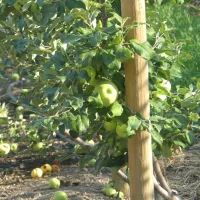



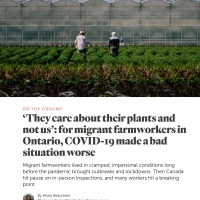



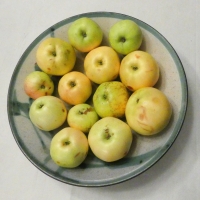

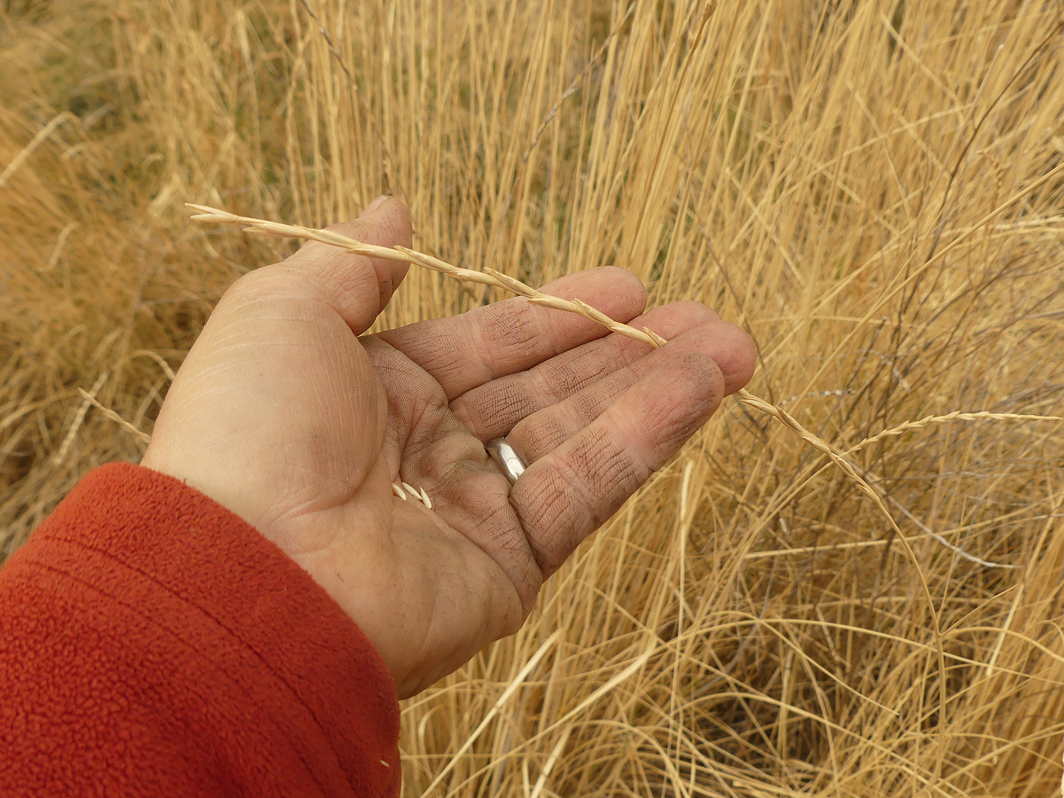







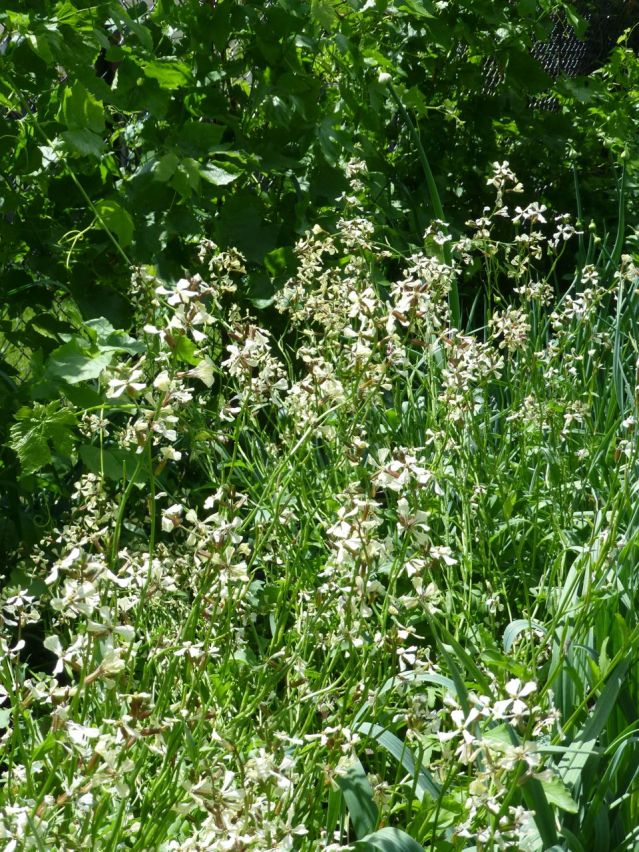












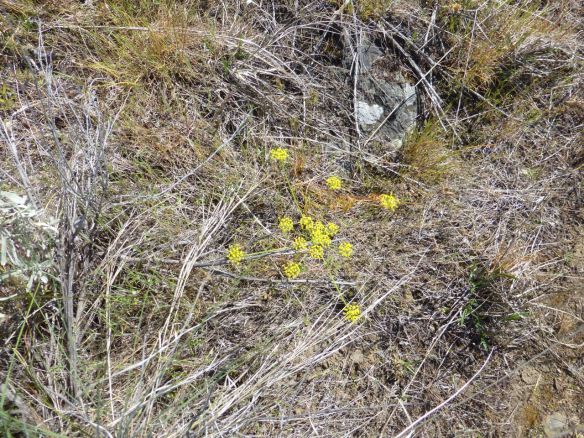






Hi, great article! I will be following along on your blog journey. Thanks for sharing my nettle soup link. 🙂
LikeLike
Thanks! I’ll try to keep the journey worthwhile! best, Harold
LikeLike
This is such great information, and I LOVED the description of gleaners.
LikeLike
Another brilliant post – thanks! Harold – are you aware that if a post has more than 15 categories & or tags it is excluded from wordpress reader searches – your mind is so spectral it is easy to go big – i was doing the same thing at times and couldn’t figure why posts wouldn’t come up in reader searches – people need access to this and it won’t come up in searches because of the 15 rule…
LikeLike
See, I can’t count! 🙂 I didn’t realize it was about categories, too. Thanks for the heads up.
LikeLike
It’s 2019 now,this article is relevant and fresh. Thank you! Something you could add now is the tradition names for these plants and post it again. I hope more people read this so many that the next potluck I’m at my friend brings it up in conversation. I’m going to be using this as a jumping off point for a homeschool project finding food right where we live. Thank you again
LikeLike